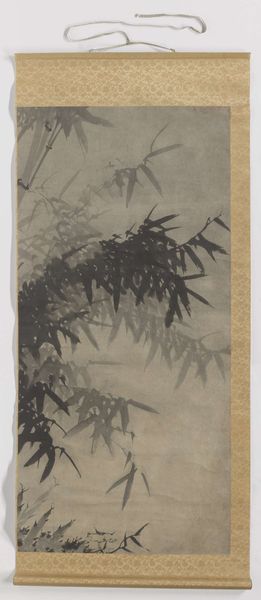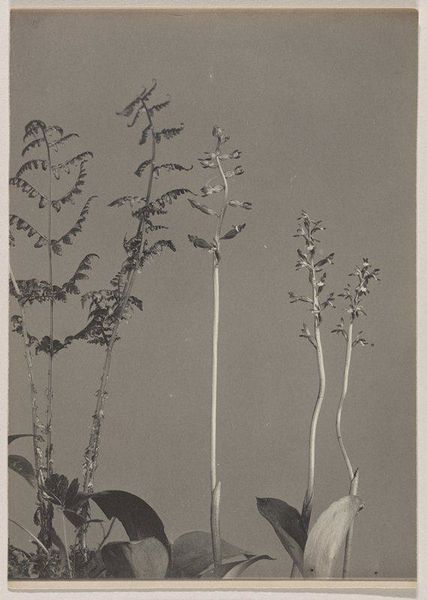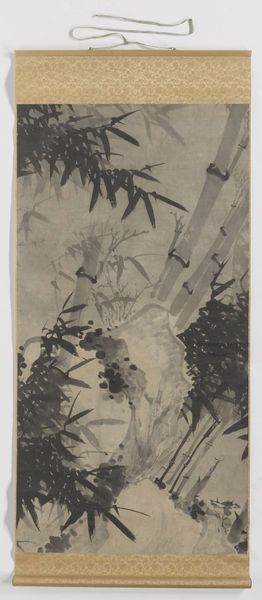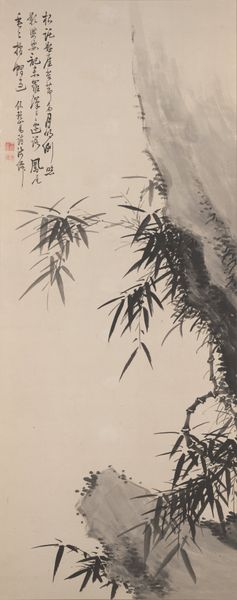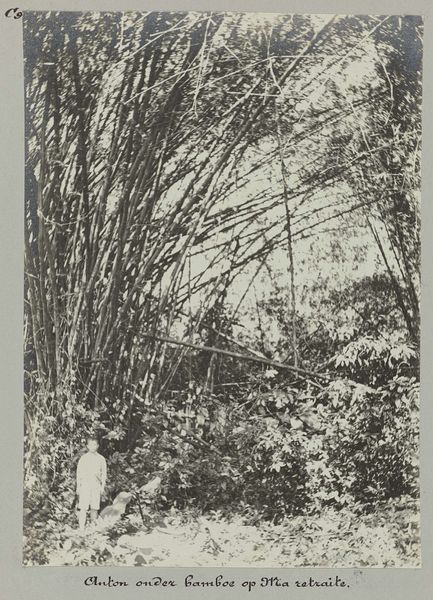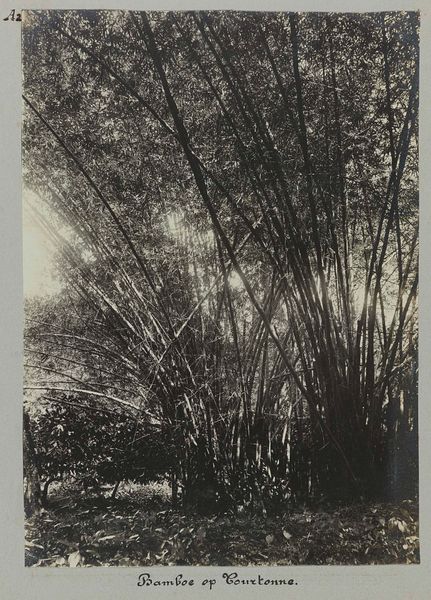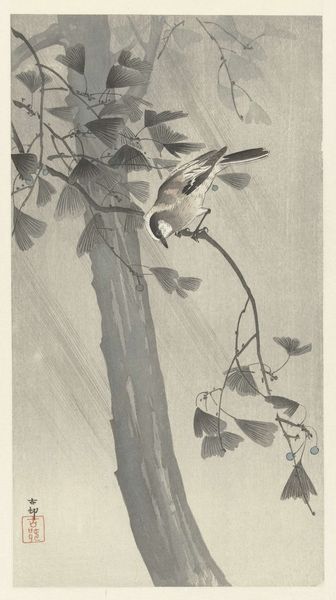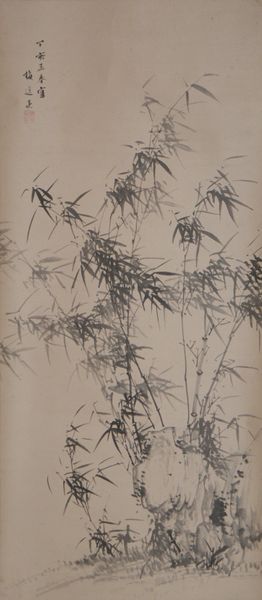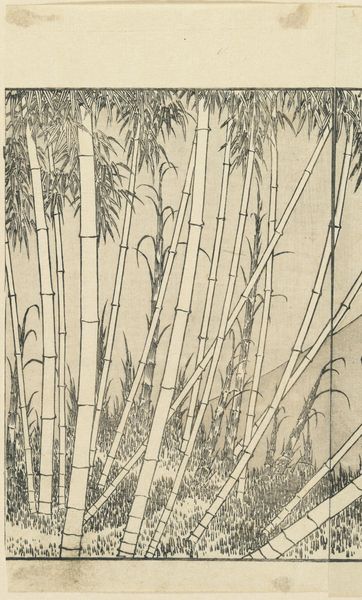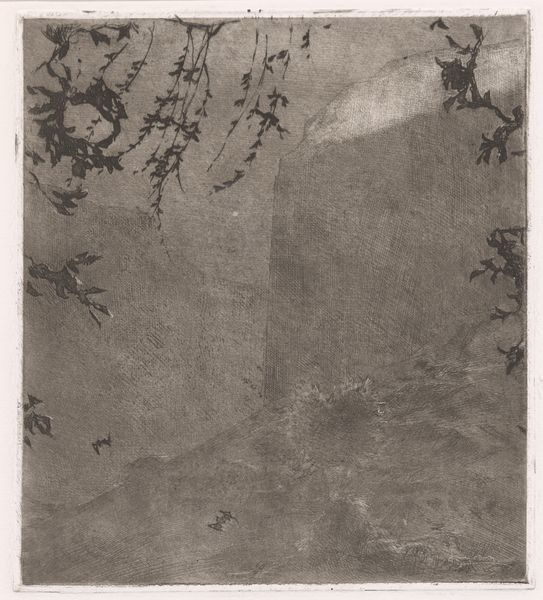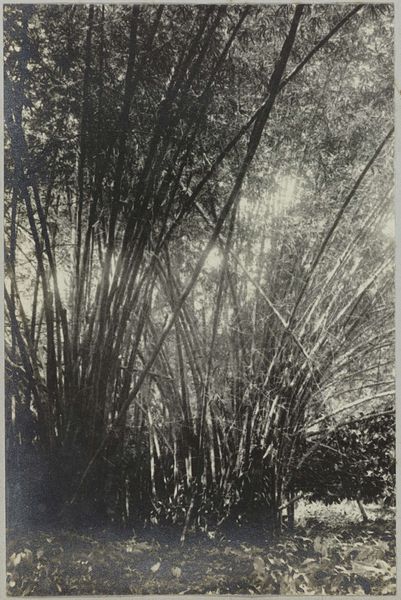
painting, paper, ink
#
painting
#
asian-art
#
landscape
#
paper
#
oil painting
#
ink
#
orientalism
#
line
#
watercolor
#
realism
Dimensions: length 140.9 cm, width 72.4 cm, width 738 mm, diameter 745 mm, diameter 47 mm, height 8 cm, width 78.5 cm, depth 26 cm
Copyright: Rijks Museum: Open Domain
Curator: Before us is "Bamboo", a captivating ink on paper painting attributed to Zhengxing, also known as Wuzhai, created sometime between 1675 and 1750. Editor: My immediate reaction is tranquility, a serene whisper captured in monochromatic tones. It’s remarkably spare; a few strokes evoke an entire grove. Curator: Exactly. Bamboo in Chinese art carries profound symbolic weight, representing resilience, integrity, and flexibility – virtues highly esteemed in Confucianism. Think of bamboo bending in the wind, but never breaking; a model for principled survival. Editor: Absolutely. And consider the sociopolitical context. During periods of upheaval and dynastic transition, like the late Ming to early Qing, when this was painted, bamboo motifs became coded expressions of resistance. The artist uses these naturalistic images to communicate strength in a society undergoing deep trauma. Curator: Precisely. Beyond overt symbolism, we find a delicate interplay of realism and expressive line work. The brushstrokes, observe how they vary in thickness and intensity, breathe life into each stalk and leaf. Note the economical use of ink washes to create depth and atmosphere. It’s both precise and deeply evocative. Editor: I’m particularly drawn to the implied textures. The subtle variations in ink create the sense of smoothness on some surfaces, contrasting beautifully with the implied roughness of the leaves and the suggestion of earth beneath. In our contemporary focus on climate change, it serves as a constant reminder that nature cannot be contained and always pushes back. Curator: Yes, and there's the art of 'leaving blank,' giving as much weight to the untouched spaces as to the painted forms. This concept—emptiness containing fullness—is central to Daoist philosophy, which profoundly influenced literati painting like this. The monochrome also allows a sense of continuity over a very long time; from an ancient world that may, but also may not have been. Editor: Reflecting on this work, it resonates far beyond its historical setting, urging contemplation on balance, perseverance, and the inherent beauty within simplicity itself. And the responsibility of survival in uncertain times. Curator: Indeed, "Bamboo" acts as both a cultural artifact and an enduring reflection on our connection with nature, rendered with ink, but filled with timeless resonance. It reminds us how the images communicate with emotions more than intellectual concepts, making its own form of logic and sense.
Comments
rijksmuseum over 2 years ago
⋮
These four hanging scrolls are examples of Chinese bamboo painting. Central to this genre is mastery of the brush. The bamboo stem segments as well as the individual leaves are all rendered with just a single brushstroke. The artist worked fairly wet and, in addition to grey tints, made ample use of an undiluted deep black ink to create an atmosphere of lush and moist vegetation.
Join the conversation
Join millions of artists and users on Artera today and experience the ultimate creative platform.
